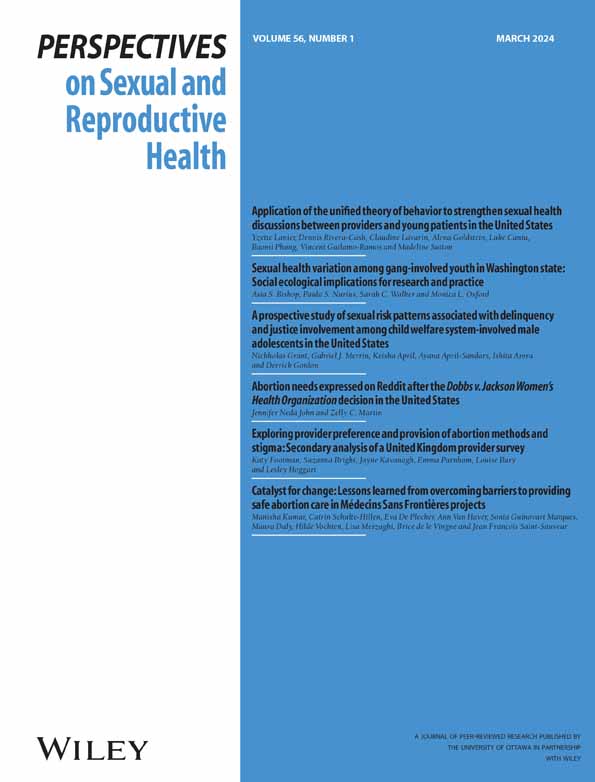Seeking financial and practical support in an abortion‐hostile state: Analysis of abortion fund data in Kentucky, 2014–2021
IF 3.5
2区 医学
Q1 DEMOGRAPHY
引用次数: 0
Abstract
ObjectivesPhilanthropic abortion funds are integral to accessing care in the United States, providing both financial and practical assistance. Yet relatively little is known about those who seek these essential services. In this study, we analyzed data from a Kentucky abortion fund to assess characteristics of abortion fund callers.MethodsWe analyzed 2014–2021 administrative data from the Kentucky Health Justice Network's (KHJN) Abortion Support Fund and compared them to abortion data from the Kentucky Department for Public Health (KDPH). We analyzed age, race, and pregnancy gestation at calling (KHJN) and abortion (KDPH), and calculated在排斥堕胎的州寻求财政和实际支持:2014-2021 年肯塔基州堕胎基金数据分析
目的在美国,慈善堕胎基金是获得医疗服务不可或缺的一部分,它提供经济和实际援助。然而,人们对寻求这些基本服务的人却知之甚少。方法我们分析了肯塔基州健康正义网络(KHJN)堕胎支持基金的 2014-2021 年管理数据,并将其与肯塔基州公共卫生部(KDPH)的堕胎数据进行了比较。我们分析了年龄、种族、呼吁时的妊娠期(KHJN)和堕胎(KDPH),并计算了 Z 值和 P 值,以比较两个数据源中每个类别的比例。结果从 2014 年到 2021 年,该基金共支持了 6162 人,当时肯塔基州有 28741 人进行了堕胎。与肯塔基州卫生部的数据相比,KHJN 的来电者中 30 岁以下的比例更高,来电者中黑人或其他种族的比例更高,来电者中妊娠 14 周或以上的比例更高。结论与州数据相比,KHJN 支持的年轻人、有色人种和妊娠晚期的比例更高。这些发现证明,结构性弱势群体更有可能面临护理障碍,而堕胎基金则为生殖公平提供了必要的支持。
本文章由计算机程序翻译,如有差异,请以英文原文为准。
求助全文
约1分钟内获得全文
求助全文
来源期刊
CiteScore
5.10
自引率
3.40%
发文量
24
期刊介绍:
Perspectives on Sexual and Reproductive Health provides the latest peer-reviewed, policy-relevant research and analysis on sexual and reproductive health and rights in the United States and other developed countries. For more than four decades, Perspectives has offered unique insights into how reproductive health issues relate to one another; how they are affected by policies and programs; and their implications for individuals and societies. Published four times a year, Perspectives on Sexual and Reproductive Health includes original research, special reports and commentaries on the latest developments in the field of sexual and reproductive health, as well as staff-written summaries of recent findings in the field.

 求助内容:
求助内容: 应助结果提醒方式:
应助结果提醒方式:


